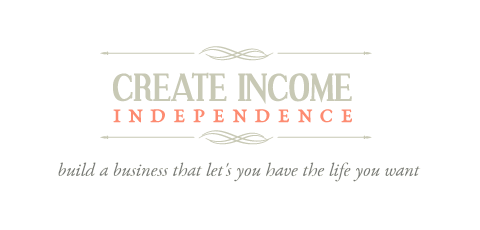
Our theme over the last several posts, A Simple Way to Validate a Business Idea, How to Use a Landing Page to Validate Your Idea, and How to Create a Powerful Facebook Ad, has been to create a business idea and test it to see how much interest exists for your proposed offer.
We have said that using paid advertising is a great way to determine if your audience is interested in your product.
Traffic is vital for any business and paid traffic, an ad, is the fastest way for an online business to find prospects and run a test.
Remember, it’s important to validate a new idea because 80% of offers fail. Testing is an important first step before putting the time and money into creating the full version.
Setting up the ad
To start the ad process, you need to know what you want to accomplish. Facebook calls this choosing the right objective. There are three categories or goals that may fit your objective. They are Awareness, Consideration, and Conversions.
If your goal is to increase interest in your business and create brand awareness, then awareness would be your ad objective. If you want to generate leads, send traffic to a post or page on your website, then consideration would be the right objective. However, in our example, we want people to take a specific action on our website, go to our landing page, and opt-in to make a purchase, so we use the conversion goal.
Let me take a minute for a brief explanation about Facebook ad structure. Objectives are set at the campaign level and apply to all ads in that campaign. Our campaign is all the ads that we create to test our offer.
In each campaign you have ad sets, the ad sets contain the individual ads. The ad set level is where you set the target audience, placement of ads, budget, and schedule. The ads are the creative part, headline, image, and text.
You can learn more about ads in the Facebook courses. Here and here.
Next, step is to define your audience
Specify your audience
Facebook has different ways to target audiences. They call them Core Audience, Custom Audience, and Lookalike Audience. This choice is selected at the ad set level.
Core audiences allow you to set the audience’s demographics, interests, and behaviors.
Custom audiences let you input your customer data to reach people you already have a relationship with.
Lookalike audiences let you find people who are similar to those who have previously engaged with you.
In our example, we are going to use core audiences because we want to find new prospects who may want your proposed product. We can define them by demographics which include age, gender, educational level, relationship status, location, and broad occupation.
Here is where you include the interests and behaviors you’ve determined that your target audience has. These may include certain topics or activities they participate in, publications they read, websites they visit, or hobbies they have. In many cases, this may be your best estimate based on what you know about them and can be selected from a list provided on Facebook.
Placements, budget, and schedule
There are several places where your ad can appear. It’s best to stay away from automatic placements for your ad test. With automatic placement, ads can show up in different places and skew the performance. Instead, in our example, we will use the Facebook Newsfeed. The ads will appear on the desktop news feed when using the computer and the mobile news feed on the Facebook app.
Setting a budget and schedule
The budget amount is set based on how much you want to spend. If you make it too low, it will take a lot of time to see sufficient results. You need to set a number where Facebook has something to work with. I have seen it suggested that you could go as low as $5.00 a day. While that is possible, you should aim to spend more, especially if you are testing several ad variations and want it to run for many days. You want to make sure each ad variation gets a certain number of impressions so you have dependable data.
There are two ways to set a budget.
1-A campaign budget optimization (CBO) sets one budget at the campaign level that will automatically distribute the amount to the ad sets that present the greatest opportunity to achieve business goals, according to Facebook.
2-Individual ad set budgets let you set a budget per ad set, which gives you control over how much budget is allocated to each set.
This is a choice you need to make. However, if you want each ad set to have an equal chance of getting impressions, you will have more control by setting an individual ad set budget. With a CBO when one ad starts receiving a better response, it will trigger more of the budget.
While that sounds like a good idea, it’s possible one ad may do better for a number of unrelated reasons. So an automatic distribution may not be the best choice to determine the best ad.
You have the ability to schedule a start and end date and a specific time to run your ads. You should set your ads to start running in the early morning so the budget for the day is evenly spent.
Testing several versions of the ads
The key to getting an accurate answer is to test. Test ads with two different images, two different headlines, and two different intros, (which is the first two lines of the ad).
Once you create the ads, they are put as part of the ad sets and you can test them with your defined audience. After you determine which ad gets the best results, you can run the ad with different audiences. Although you set up a target audience, you can fine-tune them to see if you can get a better response.
In our May post, we made a case for using a long-form ad that provides the space to explain what you offer. Prospects can get a good idea of the benefits and values before clicking through. This gives you a better analysis because the people who click through have an understanding of what’s available and desire more information.
Looking at the metrics
Now that your ads are running, and each ad has received the traffic you defined as your goal, the next thing is to analyze the results.
There are a few metrics that are relevant. The CTR- click-through rate and the CPC- cost per click.
The CTR will tell you the percentage of times someone saw your ad and clicked to the page you sent them to, usually a landing page. A high number is good because it shows that your ad is generating traffic.
The CPC is the result of how many clicks CTR you’re getting and how much it’s costing you to have the ads shown.
There are other metrics, but these will tell you a lot about your ad performance.
Analyzing the important results
While the metrics say a lot, what you want to know is how many people go to your landing page and opt-in for the product you’re testing. That is the important factor.
Having run all the ad variations we describe above, you now have data.
If you got a lot of traffic to your ad, but not many are clicking through, then the ad is doing a poor job of converting the traffic and persuading them to learn more about the product. You will need to revise your ad and retest.
If lots of people click through from the ad to the landing page but few buy, then either the copy is not right or the offer is not appealing. The landing page copy may not be explaining the product or its benefits well, or the price does not fit the product.
Rewrite the landing page and re-test.
If still, with all the revisions and re-testing, no one is interested, it may be a problem with the product. Take a look at your market research and make sure your product meets the prospects’ needs. If you feel it does, rework your product and how you present it and try again.
If not, go back into the market and find a new idea.
Remember, success to you is seeing if there are enough buyers at your price to build a profitable and sustainable business. You need to determine what that is. I wrote about this in the March post.
Conclusion
Whichever way it turns out you will know before you put a lot of time and money into creating the whole product that may not succeed. All you did was spend limited time researching the market, writing and testing ads and landing pages, and a small investment in the Facebook ads.
As frustrating as this may have been, it is a process you can repeat until you validate an idea and have confidence it will be a success.
The Solo Entrepreneur’s Guide
To make sure you get access to the next post, subscribe to The Solo Entrepreneur’s Guide.
The valuable content in this monthly publication will help you transition from the job world and create a self-reliant income, live life your way, and achieve wealth, freedom, and independence.


Leave a Reply